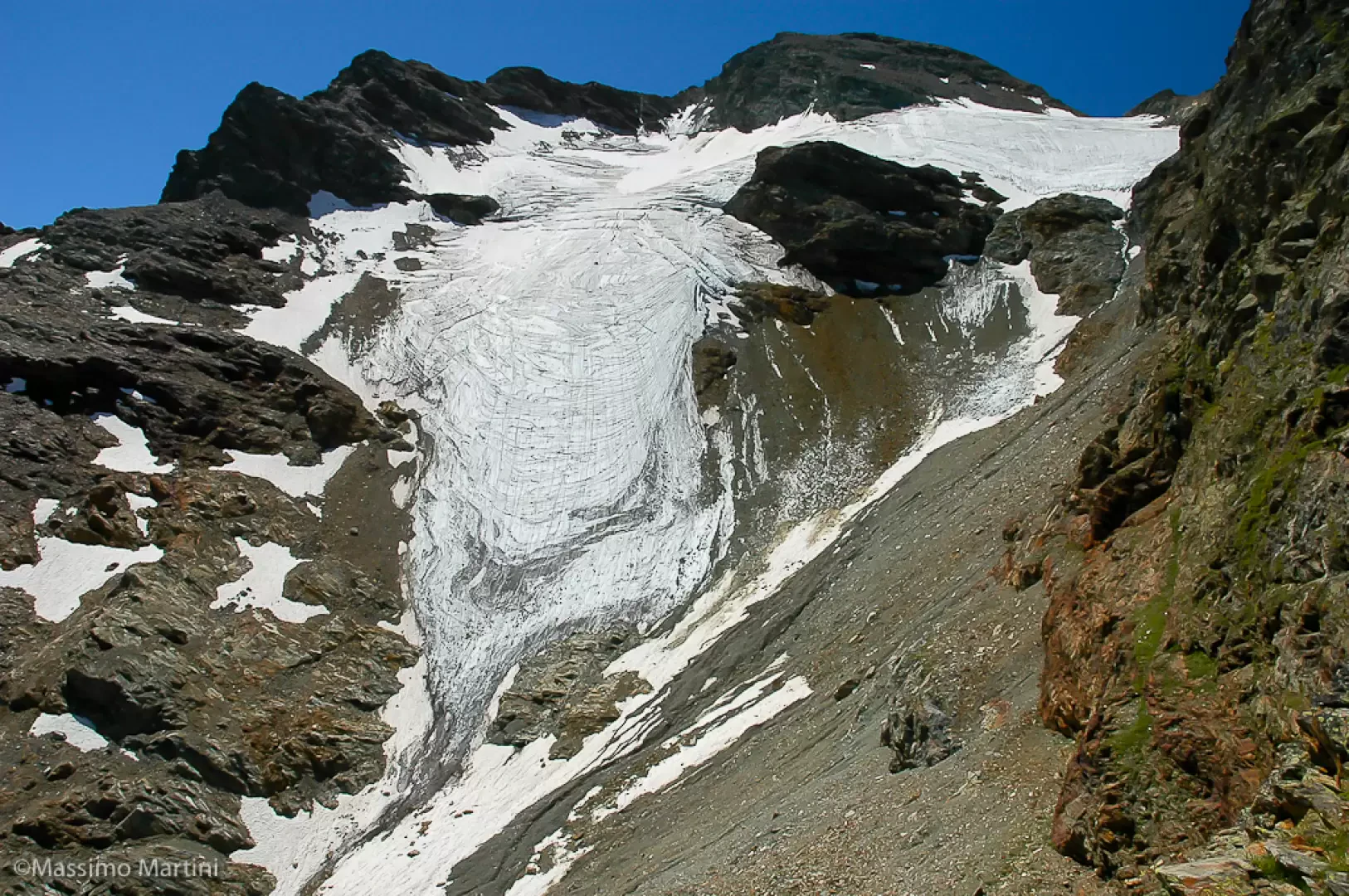Vofrède Glacier

Introduction
Hidden between the highest folds of the Valtournenche, the Vofrède Glacier stretches out on the northern slope of Mont Rous, a 3,241-metre peak located in the Pennine Alps. This glacier, although less well known than others in the region, offers a significant example of the transformations taking place in the Alpine environment.
Description
The Vofrède Glacier presents itself as a small glacial apparatus, characterised by a valley-like morphology, with a tongue extending along a sunken valley. Its north-eastern exposure helps to preserve the ice during the summer months, but does not make it immune to the effects of global warming. Observations conducted in 1928 by the Comitato Glaciologico Italiano already showed poor snow cover, despite the favourable exposure. More recently, in 2010, further checks confirmed the glacier's tendency to retreat.
The environment surrounding the glacier is characterised by flora and fauna adapted to the extreme conditions of the high mountains. Pioneer plant species and animals such as the chamois and marmot populate these altitudes, while the golden eagle often flies over the skies above the glacier.
In terms of hiking, the Vofrède Glacier is accessible via the Col Vofrède via ferrata, a route that starts at the locality of Perrères and ascends the Créton valley. This route, which requires good training and the use of appropriate equipment, offers spectacular views of the glacier and the surrounding peaks, such as the Matterhorn and Monte Rosa. The route continues up to the Col de Vofrède and, for the more experienced, to the summit of Mont Rous.
The Vofrède Glacier is not only a destination for mountain enthusiasts, but also an indicator of the climatic dynamics taking place in the Alps. Its continuous monitoring contributes to the understanding of the processes of glacial retreat and the associated environmental implications.